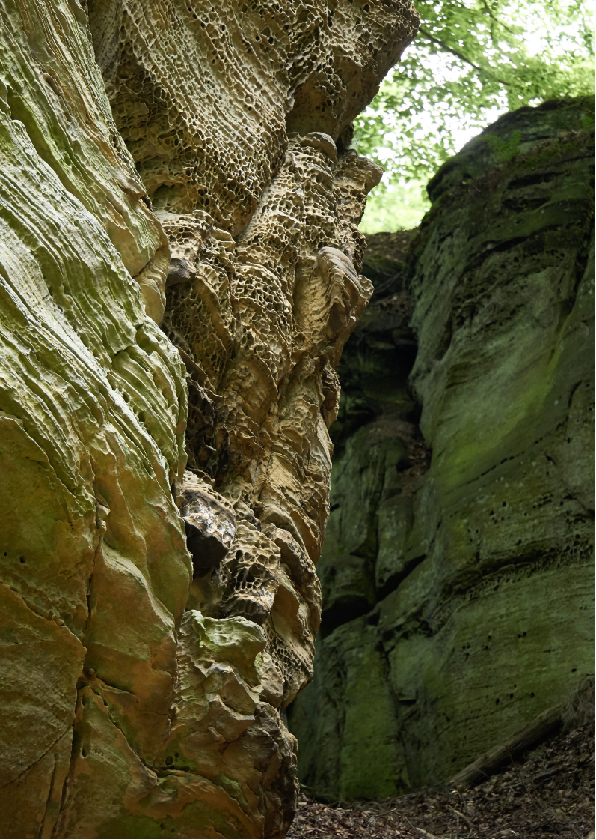Region

Living thanks to the power of water
The name “Mëllerdall” did not come out of the blue: in the past, in a poor region, rivers such as the Ernz, the Black Ernz and the Sûre used to run the various mills and enabled people to produce flour, oil, cloth and other products. In the Consdorf mill, for instance, walnuts and rapeseed were processed into oil, while in the Larochette region, the power of the water made it possible to run the machines of the textile industry. In Echternach flour was produced until very recently. Even today you can still find many mills or their remnants in the Mullerthal region. At the “Dieschburg Mill” in Lauterborn near Echternach, you can learn more about the production of flour and coffee. The old historical machines dating from 1910 are still in operation and group tours are organized. The Tourist Center Heringer Millen is also worth a visit. Take a trip back in time in the passionately renovated old mill and immerse yourself in the history of the site. Nor should all those places that do not necessarily come to mind when talking about mills be forgotten. For example, did you know that the Hohllay in Berdorf was a quarry for millstones?
The orchards - Typically luxembourgish
Orchards were to be found all over the country in the past, especially in the Mullerthal region, and they are undoubtedly part of the typical Luxembourgish rural landscape. They provide the raw materials for the production of various regional products: brandy, juice or jam. Whereas they played a prominent role in the landscape until the middle of the 20th century, many orchards have nowadays disappeared or have been abandoned due to the mechanization of agriculture and competition from commercial fruit growing and large plantations.
More and more initiatives have been taken in recent years however to remedy this situation and breathe new life into the orchards. They include LEADER projects, the biological station of the“Natur- & Geopark Mëllerdall” , and initiatives by associations such as natur&ëmwelt, private individuals and producers. A part of the region’s DNA, orchards are also indispensable for biodiversity.


Far more than just a few stacked stones
The dry walls do not really stand out from other walls and structures at first glance. Upon closer scrutiny, however, these stones piled one on top of the other reveal much more and are bound to surprise us. What is so special about these structures?
The space between the different stones makes the dry wall a diverse habitat for animals and plants. The dry walls were built with local stones and materials collected from fields and meadows over the centuries. The stones have been stacked to create a stable structure that does not require any cement, while meeting the various requirements: retaining wall, free walls, stairs, drainage ditch and even shelters. In addition to their biotope quality, dry stone walls also provide protection against erosion and flooding. It comes as no surprise therefore that this old craft is being revived in the “Natur- & Geopark Mëllerdall”as part of an Interreg Va project. Keep your eyes wide open when you walk through the forest, fields and orchards. The number of dry-stone walls you will encounter will surprise you.
Experience Geology
The Mullerthal is an ideal place to learn about geology and its impact on the evolution of the region. The earth and its constituent materials are the vital basis of its producers.
The incredible diversity of the Mullerthal region has made it famous beyond its borders. Impressive rocks, deep ravines, extensive plateaus, forests and fields form the vital backbone of the region’s products.
Processes such as erosion and disintegration have shaped the landscape. The life and people of the region have been marked by this exceptional development.
Rocks, crevices and marshes provide an ideal habitat for protected plants and animals. The region was recently turned into a Nature and Geopark so that the public can get to know these characteristics better.

